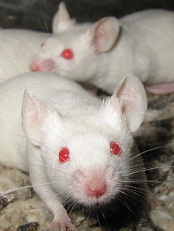
Credit: Aaron Logan
A new method of genome editing can cure hemophilia B in mice, researchers have reported in Nature.
This new technique doesn’t require the co-delivery of an endonuclease to clip the recipient’s DNA at specific locations, and it doesn’t rely on the co-insertion of genetic promoters to activate the new gene’s expression.
These differences may make the new approach both safer and longer-lasting than other genome editing methods, according to researchers.
“It appears that we may be able to achieve lifelong expression of the inserted gene, which is particularly important when treating genetic diseases like hemophilia and severe combined immunodeficiency,” said study author Mark Kay, MD, PhD, of the Stanford University School of Medicine in California.
“We’re able to do this without using promoters or nucleases, which significantly reduces the chances of cancers that can result if the new gene inserts itself at random places in the genome.”
Using their new technique, Dr Kay and his colleagues were able to insert a working copy of the human coagulation factor IX gene into the DNA of mice with hemophilia B. Although the insertion was accomplished in only about 1% of liver cells, those cells made enough factor IX to ameliorate the disorder.
Instead of using nucleases to cut the DNA or a promoter to drive expression of the factor IX gene, the researchers hitched the expression of the new gene to that of albumin.
They used a modified version of adeno-associated virus and relied on homologous recombination to insert the factor IX gene near the albumin gene.
Using a special DNA linker between the genes, the researchers were able to ensure that the clotting factor protein was made hand-in-hand with the highly expressed albumin protein.
During homologous recombination, the cell takes advantage of the fact that it has two copies of every chromosome. By lining up the damaged and undamaged chromosomes, the cell can “crib” off the intact copy to repair the damage without losing vital genetic information.
The researchers used this natural process to copy sequences from the viral vector into the genome at places they chose—in this case, after the albumin gene.
When they tested their approach in newborn lab mice with hemophilia, the team found the animals began to express levels of factor IX that were between 7% and 20% of normal. That amount of clotting factor has been shown in previous studies to be therapeutic in mice.
The researchers further showed that the technique worked as well in adult animals, even though the gene was successfully inserted in fewer than 1 in every 100 liver cells.
“We expected this approach to work best in newborn animals because the liver is still growing,” Dr Kay said. “However, because homologous recombination has been thought to occur mostly in proliferating cells, we didn’t expect it to work as well as it did in adult animals.”
The researchers are now planning to test the technique in mice with livers composed of human and mouse cells, a model that may be a good surrogate to further predict what will happen in humans.

